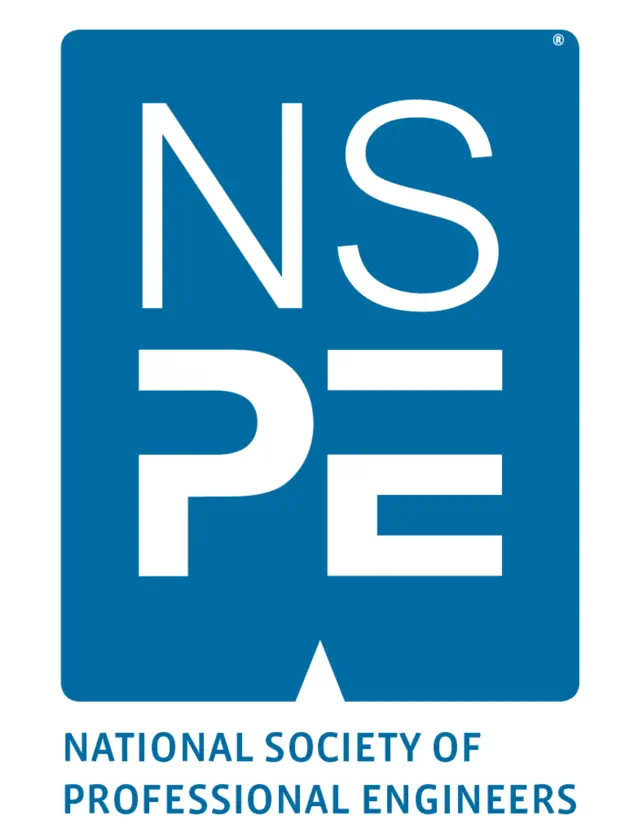April 2015
Show Time
Engineers make their move into popular culture.
BY MATTHEW McLAUGHLIN
“P
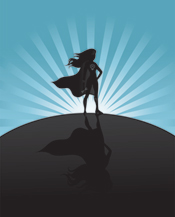 rofessional schools in medicine and law have enrollment levels well above 40% for women,” University of Wisconsin-Madison Department of Engineering Physics Professor Wendy Crone wrote in a Discovery Channel op-ed in 2008. “Engineering needs to undergo the same transformation, and I think it lies in television. What we really need is a good, prime-time TV show about…an attractive, energetic, woman engineer with a dynamic career and a full life.”
rofessional schools in medicine and law have enrollment levels well above 40% for women,” University of Wisconsin-Madison Department of Engineering Physics Professor Wendy Crone wrote in a Discovery Channel op-ed in 2008. “Engineering needs to undergo the same transformation, and I think it lies in television. What we really need is a good, prime-time TV show about…an attractive, energetic, woman engineer with a dynamic career and a full life.”
A female version of television icon MacGyver, who made being smart and solving problems look cool and adventurous, Crone continued, could do for engineering what shows like Law and Order, ER, and CSI did for law, medicine, and the physical sciences. It could create buzz and help young women see engineering as a viable and attractive career option.
Seven years later, Crone may finally be getting her wish. In February the National Academy of Engineering and the University of Southern California’s Viterbi School of Engineering, in collaboration with The MacGyver Foundation and MacGyver creator Lee Zlotoff, launched The Next MacGyver project, a worldwide crowdsourcing competition aimed at creating a scripted television show featuring a female engineer as the lead character.
While eerily reminiscent of Crone’s op-ed, The Next MacGyver project isn’t the first sign engineers may finally be making moves into popular culture. The 2011 PE cover story “Screen Play” asked if more and better portrayals of engineers in pop culture could help increase interest in the field. Four years later, we’re a lot closer to an answer.
While unflattering, stereotypical engineer Howard Wolowitz from The Big Bang Theory is still going eight seasons strong and doctors and forensic scientists are legion compared to engineers, pop culture is slowly changing, and not just because of The Next MacGyver competition. Over the last year, more engineers have made their way into primetime television, an Oscar-winning family film, and children’s television, and best of all, they don’t look, sound, or act like stereotypical engineers.
Better Than Cool
Every engineer that featured prominently in PE’s original “Screen Play” article, even Marvel’s Iron Man Tony Stark, the cool one who makes engineering look good, still reinforced one significant stereotype for engineers: They were all white men. With the engineering profession struggling to attract women, Blacks, and Hispanics, such stereotyping could be as detrimental as social awkwardness or pocket protectors.
“When you see an engineer or a tech person on a TV show or movies, something like 90% of them are male,” President Obama said at a town hall meeting last year. “So if you never see [someone like] you in that position, it’s hard to imagine, well, that’s something I should be doing.”
If the president’s common sense observation isn’t enough, studies have shown that representations of women in STEM can affect people’s general understanding and perception of women’s STEM ability. Media and technology company FEM Inc. and the University of Southern California Annenberg’s Norman Lear Center produced a white paper in 2013 that concluded, among other things, that showing girls nonstereotypical representations of women in STEM can give young girls a more positive image of STEM and of their capacity to be good at it.
“One of our taglines is, ‘if she can see it, she can be it,’” says Madeline Di Nonno, CEO of the Geena Davis Institute on Gender in Media. “If our goal is to fill the pipeline of STEM careers with women and girls, it’s really important to show it to girls.”
Unfortunately, for women and girls, they’re not seeing it. A 2012 study published by the Geena Davis Institute on Gender in Media and conducted by the University of Southern California Annenberg’s School for Communication and Journalism found women in media are less likely to be employed than men and are even less likely to work in STEM fields.
For example, after analyzing 129 family films released between 2006 and 2011, the study found women made up only 16.3% of characters with STEM careers. Of the 28 engineers in those movies, two (7%) were women.
There is some hope on the horizon, though. Don’t mistake it for a groundswell, but a small surge of change may finally be taking place in Hollywood, both in terms of its portrayal of women and its portrayal of engineers.
When the National Academy of Engineering began looking for Hollywood partners for The Next MacGyver competition, it was members of Hollywood and not the academy who initially proposed that the next MacGyver should be a woman.
“I think there’s some momentum for female lead characters in Hollywood already, and we got a lot of feedback saying, ‘Wouldn’t it be cool if it were a female engineer?’” says NAE Director of Communications and Media Randy Atkins. “And, of course, those of us in engineering circles have always lamented the fact there’s not enough women going into engineering. So it made a lot of sense.”
“The trend in Hollywood right now, the hot trend, is female leads in TV shows,” CSI creator and competition mentor Anthony Zuiker said at The Next MacGyver launch event in Washington, D.C. “I develop nothing unless it has a female lead from this point on.”
Engineers, too, seem to have received some of their best treatment by Hollywood over the last year, with women engineers making an impression in television and film.
The New Engineers
CBS’s new hit drama Scorpion portrays engineers in a mostly positive and original way. Its protagonists are all maladjusted in some way, reminiscent of The Big Bang Theory, but mechanical engineer Happy Quinn struggles with her anger and not the social failings typical of engineers in pop culture.
Also, unlike other engineers portrayed in pop culture, Happy is actually called an engineer, and it’s been that way from the very start. In the pilot episode of the show, homeland security agent Cabe Gallo shouts at her, “You’re the mechanical engineer; pick the lock!”
“She is a mechanical genius engineer,” actress Jadyn Wong said of her character in TV Guide. “She can basically fabricate, create, and solve anything with machines.”
Kids have also been watching cool female engineers lately. Big Hero 6, a movie about STEM students who use their skills to become superheroes released in November, has grossed more than $600 million worldwide and recently won the Oscar for best animated feature film. It also stars an athletic, tough female mechanical engineer with a need for speed.
The stoic but caring Go Go Tomago is as far from Scott Adam’s Dilbert as is possible. She’s also arguably the most capable and together of all the STEM students portrayed in the film.
“The rest of the team are pretty hapless initially,” Director Don Hall told USA Today. “She’s the only one who can take care of herself.”
Go Go isn’t the only engineer to appear in children’s media recently. Continuing its release of original programming, Amazon released Annedroids last summer, a show about a junior scientist and engineer named Anne who performs experiments and solves problems with her friends.
“In the preschool arena, they’re looking at it very seriously,” Di Nonno says of the media’s portrayal of women.
Annedroids does one better though. None of the show’s three protagonists fall into the white male stereotype.
Changing the face of engineering will probably take a lot more than three engineers in pop culture breaking the traditional stereotypes. Though NAE and its partners hope one hugely popular, iconic engineer may succeed. It’s why they’ve borrowed MacGyver’s name, even though they don’t want to reboot the character. What they want is a new character, a woman engineer, who becomes an icon and an inextricable part of pop culture just like MacGyver did.
“The new face of engineering is not that of Dilbert in the cartoons,” says USC Viterbi Dean Yannis Yortsos. “It is the face of bright women and men, spanning societal, racial, and ethnic divides. Diversity is not a political slogan; it is an essential ingredient for innovation.”
But to be successful, the next MacGyver will need more than a good television show with a diverse cast. The engineering community needs to be involved and continue its other outreach efforts.
“I think the important thing is that the community does play a role,” says Maria Ivancin, an assistant professor at the American University School of Communication who has studied engineering’s outreach efforts. “They have a voice in it right now, and I think it’s important that they maintain that voice and maintain a very strong voice.”
“Morgan [Freeman] always says to me, ‘If one wants their history or themselves portrayed accurately, they have to tell it themselves,’” adds Lori McCreary, CEO and cofounder of Revelations Entertainment and competition mentor. “I would encourage engineers to start getting involved.”
Even if The Next MacGyver competition succeeds, Ivancin believes the engineering community will need to continue its other outreach efforts to capitalize on the interest generated by the show. “It really has to be across the board, and it really has to be a uniform kind of message,” she says.
The competition is accepting entries until April 17. A panel of judges from engineering, entertainment, and academia will select 12 contestants to further develop their ideas and pitch them to another panel of judges at a live event this summer. Five finalists will be selected at that time, and pilot scripts will be completed by the end of this year.
“The crowdsourcing is a great idea,” McCreary says. “My dream would be a female engineer, or any engineer who is a great storyteller, coming up with something that’s so born out of who they are that it’s the perfect story to bring to life.”
“Hollywood and the TV industry have been moving in the direction of showing strong women characters, and if we can bring that together with engineering it will give us a really nice opportunity to capitalize on something that could engage girls a different way than they’ve been engaged previously,” Crone says. “I think my [op-ed] quote before at the end was ‘I’m waiting to set my TiVo,’ and that’s exactly the same. I want to watch the show.”
For more information on the competition, visit www.thenextmacgyver.com.
Our Favorite Female Engineers from Pop Culture
|
|
|
|
|
|
|
|
|
|


 Volunteering at NSPE is a great opportunity to grow your professional network and connect with other leaders in the field.
Volunteering at NSPE is a great opportunity to grow your professional network and connect with other leaders in the field.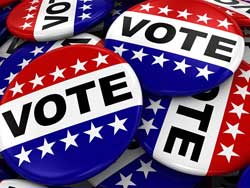 The National Society of Professional Engineers (NSPE) encourages you to explore the resources to cast your vote on election day:
The National Society of Professional Engineers (NSPE) encourages you to explore the resources to cast your vote on election day:
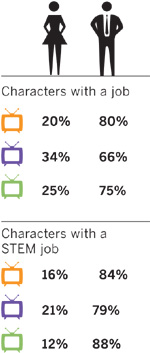
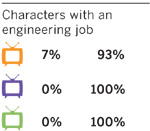
 Happy Quinn
Happy Quinn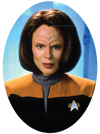 B’Elanna Torres
B’Elanna Torres Go Go Tomago
Go Go Tomago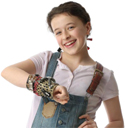 Anne
Anne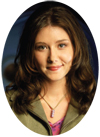 Kaywinnet Lee “Kaylee” Frye
Kaywinnet Lee “Kaylee” Frye